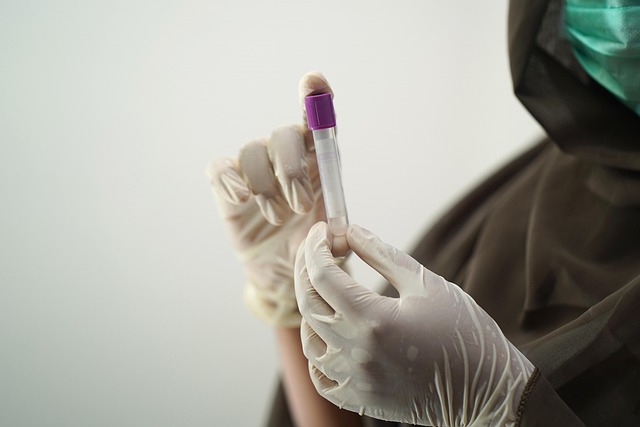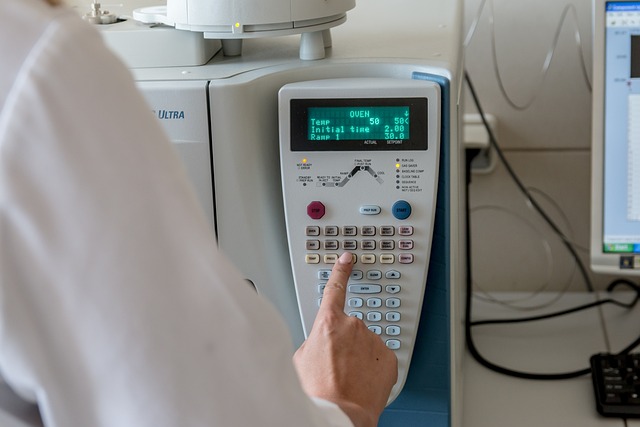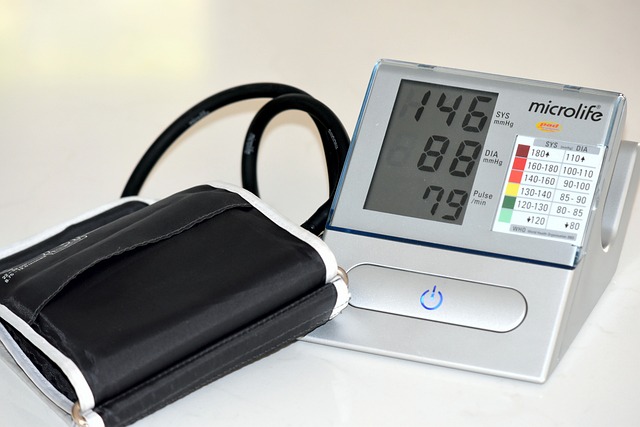Home thyroid blood tests provide convenient access to monitor thyroid function through measuring TSH, T4, and T3 levels. Results can indicate hypothyroidism or hyperthyroidism, prompting lifestyle changes or medical intervention if abnormal. While not a replacement for professional assessment, these tests empower individuals to take charge of their thyroid health early on.
“Uncover your thyroid health with a comprehensive guide to self-diagnosis. In today’s digital age, accessing healthcare information is easier than ever, and understanding thyroid function is no exception. Explore the benefits and accuracy of home thyroid blood tests, a convenient way to monitor your thyroid levels. Learn how to interpret results, making informed decisions about your health. Discover how incorporating self-diagnosis through these at-home tests can empower you to take charge of your thyroid wellness.”
- Understanding Thyroid Function: Basics Explained
- Benefits and Accuracy of Home Thyroid Blood Tests
- Interpreting Results: What Do the Numbers Mean?
- Incorporating Self-Diagnosis into Your Healthcare Routine
Understanding Thyroid Function: Basics Explained

The thyroid gland, located at the base of your neck, plays a pivotal role in regulating numerous bodily functions through the hormones it produces. These hormones, thyroxine (T4) and triiodothyronine (T3), influence everything from metabolism and energy levels to heart rate and body temperature. Understanding how this tiny gland operates is essential when considering self-diagnosis through at-home thyroid blood tests.
At-home testing kits have made it convenient for individuals to check their thyroid function without frequent clinic visits. By measuring the levels of T4, T3, and sometimes TSH (Thyroid Stimulating Hormone), these tests can provide insights into potential treatable thyroid conditions at home. Recognizing symptoms like fatigue, weight changes, or irregular periods might prompt individuals to take such tests, leading to timely intervention if thyroid issues are identified. Moreover, adopting a dietary approach focused on nutrient-rich foods and lifestyle adjustments can often help fix thyroid problems naturally.
Benefits and Accuracy of Home Thyroid Blood Tests

The advent of home thyroid blood tests has democratized access to thyroid health monitoring. These at-home kits offer several benefits, including convenience and privacy. They allow individuals to take control of their health by performing a simple finger prick test in the comfort of their homes, eliminating the need for frequent clinic visits. This is particularly advantageous for those who experience anxiety or discomfort during traditional medical procedures.
While concerns about accuracy persist, especially regarding thyroid cancer screening, home kits have shown promising results when used appropriately. They measure thyroid-stimulating hormone (TSH) levels, which can indicate both underactive and overactive thyroid glands. The symptoms of an overactive thyroid gland, such as weight loss, increased heart rate, and anxiety, are often the impetus for individuals to consider a home test. However, it’s crucial to interpret results in conjunction with other factors and consult a healthcare professional for a comprehensive evaluation, especially if there are concerning symptoms or family history of thyroid conditions.
Interpreting Results: What Do the Numbers Mean?

Interpreting your home thyroid blood test results can seem daunting, but understanding what the numbers mean is crucial. Thyroid-stimulating hormone (TSH) is a key indicator. Normal levels typically range from 0.4 to 4.0 mIU/L. Elevated TSH suggests hypothyroidism, often indicated by symptoms like fatigue, weight gain, and dry skin. On the other hand, low TSH levels might point to hyperthyroidism, characterized by symptoms such as rapid heartbeat, weight loss, and sweating.
If your test results are abnormal, it’s important to remember that further evaluation is necessary. A healthcare professional can help interpret your results in context of your symptoms and medical history. They may order additional tests or suggest lifestyle changes based on whether you present symptoms of an overactive thyroid gland (hyperthyroidism) or underactive thyroid (hypothyroidism), like how to check thyroid levels at home. Understanding what if my thyroid test is abnormal? can help guide you towards the next steps for maintaining optimal thyroid health.
Incorporating Self-Diagnosis into Your Healthcare Routine

Incorporating self-diagnosis into your healthcare routine can be a powerful tool for maintaining optimal health, especially when it comes to conditions like thyroid disorders. With advancements in at-home testing kits, such as the home thyroid blood test, individuals now have convenient access to vital health information. These tests allow you to check key thyroid markers from the comfort of your own home, providing an initial understanding of your thyroid’s function.
Comparing at-home thyroid tests with traditional doctor-administered tests reveals both benefits and considerations. While at-home kits offer privacy, convenience, and immediate results, they may not provide the same level of depth as a medical professional’s assessment. Nonetheless, identifying potential thyroid issues early through self-diagnosis can empower you to take proactive steps, such as fixing thyroid problems with diet and lifestyle adjustments, before seeking further medical intervention.
In today’s digital era, individuals are increasingly turning to home thyroid blood tests as a convenient way to monitor their thyroid health. These tests offer several benefits, including accessibility and cost-effectiveness. However, it’s crucial to understand their accuracy and limitations. By interpreting results carefully, as guided by healthcare professionals, you can gain valuable insights into your thyroid function. Incorporating self-diagnosis with professional advice empowers you to make informed decisions about your health and well-being.
